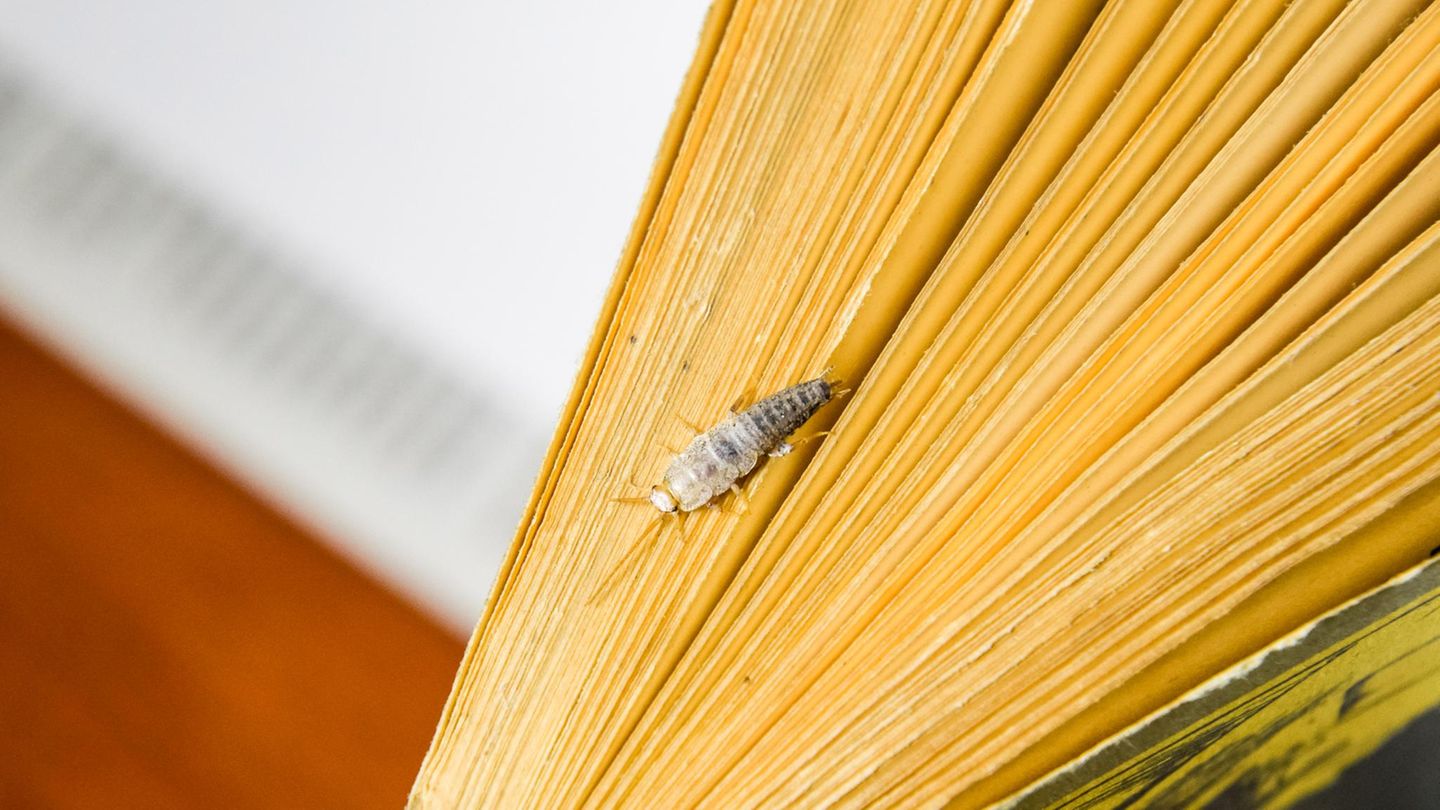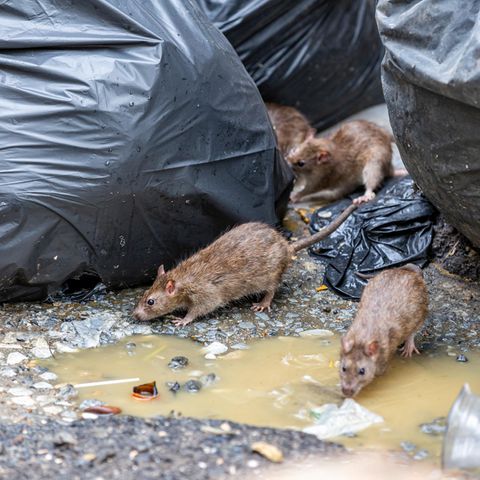Uninvited guests
Fight paperfish – this is how you get rid of the light-shy animals
Copy the current link
Add to wishlist
They look similar to silverfish, but cause more damage: How to recognize, prevent and effectively combat paperfish.
They move barely visibly in dark crevices, shy away from light and usually only appear at night or during clearing work: small, gray, scale-covered insects that many consider to be harmless silverfish. But if you look closely, you may discover paperfish – a lesser-known but increasingly common species that is considered a material pest in libraries, archives and private households. Unlike silverfish, which primarily seek moisture and prefer to stay in bathrooms or kitchens, paperfish prefer drier environments. They infest boxes, books, documents and wallpaper and can cause unnoticed damage for years.
The animals belong to the order of fishes, but are a different species than the moisture-loving silverfish. That’s precisely why it’s important to know the differences and take appropriate measures to combat them – because commercially available remedies for silverfish remain Paper fish often ineffective.
How to recognize paper fish
Paper fish At first glance, they are very similar to silverfish: both species are about one centimeter long, move in waves and have three fine tail threads at the end of their bodies. But they are usually lighter, often slightly silvery, with a matt surface and appear less shiny than their moisture-loving relatives. Above all, they differ in behavior: while silverfish prefer to seek warmth and moisture, for example under bathroom tiles or behind dishwashers Paper fish Temperatures between 20 and 24 degrees with relatively low humidity.
View this post on InstagramA post shared by DETEK Pest Control (@detek.sbk)
At this point, our editorial team has integrated content from Instagram.
Due to your privacy settings, this content has not been loaded to protect your privacy.
This makes them typical inhabitants of bedrooms, storage rooms, archives, bookshelves or moving boxes. Their diet consists of starchy substances such as paper, paste, wallpaper glue, but also cotton and textiles. Their lifestyle is extremely hidden, which is why an infestation is often only noticed late. For example, through small, jagged traces of corrosion on book pages or noticeably smooth areas on cardboard surfaces.
How paper fish get into the apartment
In most cases, the animals are brought in unnoticed – for example with moving boxes, book deliveries or second-hand furniture. Unlike cockroaches or other hygiene pests, a lack of cleanliness plays a role Paper fish hardly any role. Rather, a stable, dry indoor climate with little light and numerous hiding places favors their reproduction. Once nested, they can Paper fish last for years because they are extremely frugal, live in hiding and require little food. They reproduce slowly but continuously: a female lays up to a hundred eggs over the course of her life, which are deposited in cracks, behind skirting boards or under furniture – places that are hardly accessible and therefore difficult to reach even with normal cleaning products.
Targeted measures to combat it
An effective control plan first relies on identification: If you find an individual insect, you should, to be on the safe side, fix it with an adhesive strip and examine it with a magnifying glass or photograph it. This way you can clarify whether it is a harmless silverfish or actually a paperfish. As soon as the suspicion is confirmed, systematic combating begins. It is important to change the indoor climate because… Paper fish require constant conditions: Changing the humidity through regular ventilation, using a humidifier or deliberately lowering the room temperature can significantly slow down reproduction.
Special ones are particularly effective which are based on the preferences of Paper fish are coordinated. Unlike classic silverfish traps that lure with sugar or starch, some products use protein or cellulose bait in combination with insecticidal active ingredients. Models like the Aeroxon silverfish trap can also do this Paper fish catch if they are placed in a suitable location – for example behind bookshelves or in boxes.
It seems even more targeted which is particularly suitable for dry interiors and distributes the active ingredient in closed areas. Anyone who has already taken action against paperfish and now wants to monitor the infestation can use products like this fall back. In combination with vacuuming along the baseboards, sealing joints and cracks and removing old cardboard boxes, the return of the population can be effectively prevented.
For larger or stubborn infestations, we recommend using an insect spray that is sprayed specifically into cracks or crevices. However, you should pay attention to products that are odorless and suitable for indoor use and that do not leave any residue on surfaces. The about is on Paper fish tested and can be sprayed on the backs of shelves or behind skirting boards. Not only does it work immediately, but it also has an effect that lasts up to six weeks and also affects newly hatched animals.
Long-term protection through prevention
Even if the acute infestation is contained, precautionary measures remain important. Paper fish can survive for months without food and spread again from remaining eggs. If you clean bookshelves regularly, avoid boxes from cellars or attics and ensure a variable room climate, you reduce the likelihood of re-infestation. Seals on doors, window joints or behind skirting boards can be sealed with silicone or sealing tape to make places of refuge inaccessible. Can be particularly flexible Apply, like the one from Toom’s own brand. A thorough check of used furniture or flea market finds can also help to avoid new items being stolen.
The goal is not to create a sterile environment, but rather to specifically change the conditions under which Paper fish can survive. If you work with a little consistency, patience and the right products, you will not only recognize the light-shy material pests, but also get rid of them. Because even if they hide well, their preferences make them predictable.
*This article contains so-called affiliate links to products in online shops. If a user clicks on it and buys something, the publisher receives a commission from the retailer, not the manufacturer. Where and when you buy a product is of course up to you.
Source: Stern




